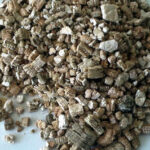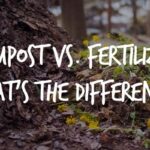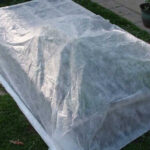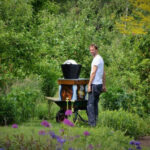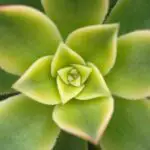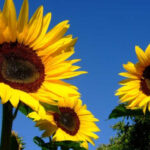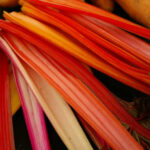People have been using epsom salt for plants for a long time. All over the internet, you see it recommended in glowing terms that really appeal to the emotions.
People claim that spritzing their plants with epsom salt dissolved in water will kill pests, make their tomatoes huge, kill off fungal diseases on the leaves of their roses, and that it’s an effective weed killer. Epsom salt is purported to cure blossom end rot, and it’s supposed to “make plants stronger”.
But what’s weird is that when you combine all of those miraculous claims together, they don’t make sense. How can one product be an effective killer of weeds without damaging your desired plants and somehow “make them stronger” at the same time? Can one product really kill off all garden pests?
Let’s start with what Epsom salt is, then go over some of the claims of what it supposedly does.
What Is Epsom Salt?
In the 1600s, a small town in the county of Surrey, England called Epsom became quite the destination.
A villager by the name of Henry Wicker had been looking after animals in the commons there, but a water shortage had made things difficult for him and his animals. He saw water in a cow’s hoofprint in the mud and dug a shallow hole there, hoping that it would fill with groundwater overnight. In the morning when he returned, it indeed had filled with groundwater, but the cattle wouldn’t touch it.
Wicker tasted the water and found it to be bitter. He also discovered that the water had a laxative effect. Since he had what he believed to be miraculous water, he began promoting his discovery as being medicinal, and over time Epsom became known for its water. It became a spa town that drew people from far and wide who came for the “curative” elements of its water.
But what was in that water? It was believed to contain magnesium sulfate, a compound of magnesium and sulfur. Later testing during the 1900’s determined that in fact most of the dissolved material in the water was calcium sulfate. Unfortunately, by that point, it had long been believed to be magnesium, and an entire industry around Epsom’s salt had been created.
In modern days, the dry salt crystals we can purchase as Epsom salt are magnesium sulfate, also called MgSO₄. They take their name from the town of Epsom in Surrey, UK, but they may or may not actually be part of what pooled up in the cow’s hoofprint. Still, Epsom takes some civic pride in the fact that over 400 years ago, their town became popularized because of the discovery of Epsom salts, although they more often credit the cow than the villager for the discovery!
When did Epsom salt become used for gardening purposes? The answer to that is less clear. Many Epsom salt companies began printing uses for the salt on the box in an effort to get more sales. It’s likely that using Epsom salt in the garden was inspired by one of those boxes. Various health benefits were also printed on the boxes, some of which have been disproven scientifically over the years.
Epsom Salt In The Garden: Pros and Cons
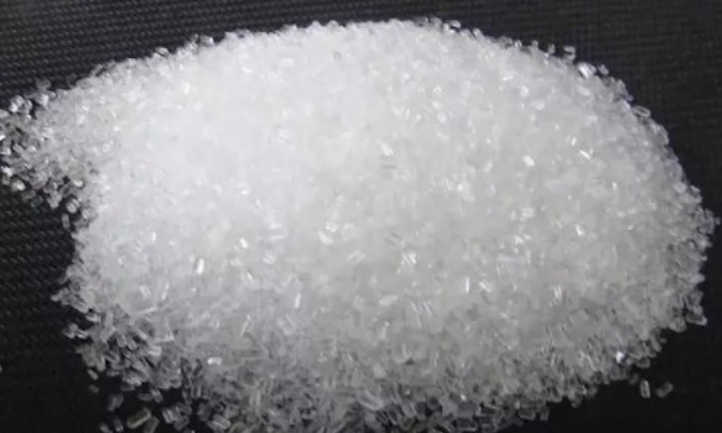
If you skim through the internet, the ways to use epsom salt are myriad. Let’s explore some of the ways that people use epsom salts and whether they’re actually effective or not!
Blossom End Rot
By and large, the most common recommendation for using epsom salts is to treat tomatoes and peppers for blossom end rot. People recommend to place a tablespoon of epsom salts in the soil before planting or to dissolve epsom salt in a gallon of water and spray plants with it as a foliar spray.
Blossom end rot is caused by a calcium deficiency in your plants. Most often, it’s directly linked to irregular watering. When the soil is dry, plants cannot absorb nutrients readily from it, which can lead to a number of deficiencies. Using timed drip irrigation can prevent blossom end rot.
Epsom salt contains no calcium. It does have magnesium and sulfur, but by applying that to your tomatoes to treat blossom end rot, you could make the condition worse. Another common cause of calcium deficiencies is an overage of other nutrients in the soil; too much of any single nutrient can create imbalances. An overage of magnesium can cancel out the effects of the regular calcium in the soil, making it a dangerous additive when trying to treat blossom end rot.
Pepper plants and tomato plants need nitrogen for their initial plant growth and development, but once the plants are old enough to start setting fruit, phosphorous becomes more essential. When caring for your tomatoes and peppers, regularly fertilize with a balanced fertilizer early in the year per manufacturer’s directions, but switch to a lower-nitrogen, higher-phosphorous fertilizer for fruit development. It’s also wise to soil test annually to see if you need to fertilize at all, as many home gardeners have a rich soil to begin with.
Avoid using epsom salts as a treatment for blossom end rot. While it’s a common garden myth, it’s inaccurate.
Pest And Disease Control
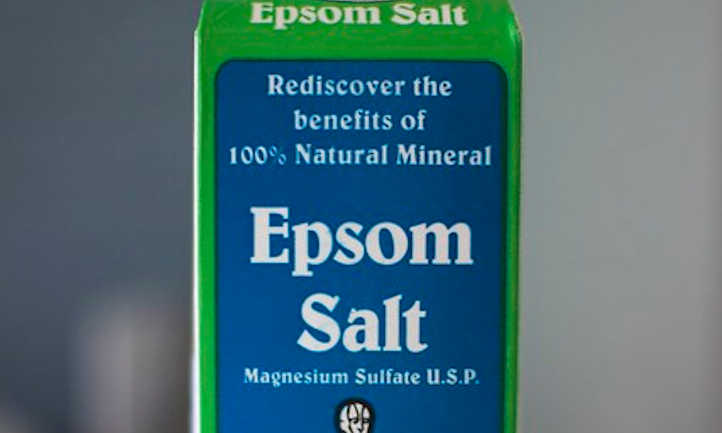
Up until the 1950s and 1960s, there were sporadic claims that using epsom salts in the garden would reduce pest populations. There have also been claims of epsom salt being applied as a foliar spray to treat plant diseases and improve plant health.
Tests on various pests have provided no evidence that epsom salt helped plants stay pest or disease-free. In fact, applying epsom salt as a spray on many plants will cause leaf scorch.
While sulfur on its own is effective against some sorts of pests, higher magnesium levels have little benefit. Plants need other methods of garden pest control or disease control that are targeted to the pests or diseases being identified, rather than a homebrewed solution.
But what about the sulfur in epsom salts? Sulfur is commonly used as a disease treatment, particularly for things like rust or powdery mildew. Unfortunately, the sulfur quantity in magnesium sulfate isn’t enough to be effective. If you want to use sulfur, opt for soluble sulfur instead and skip the magnesium in epsom salts.
Epsom Salt As A Fertilizer
Some people claim that epsom salts are a viable fertilizer to prevent magnesium deficiency issues.
It’s important to note that the essential nutrients that most plants require are nitrogen, potassium, and phosphorous. Nitrogen promotes foliage growth. Phosphorous promotes healthy flowering and fruit production. Potassium is used for overall plant health and root and top development.
While magnesium is an essential micronutrient that plays a major role in photosynthesis, many plants only need a tiny amount in their soil. Adding epsom salt to the garden only helps if your soil is truly magnesium deficient. In fact, garden epsom use can create an imbalance that can reduce the uptake of other, more essential nutrients.
Often, a phosphorous excess can make soils appear to be magnesium-deficient. Since home gardeners often don’t soil test annually, it can be very easy to end up with an excess of NPK nutrients, especially if the gardeners fertilize on a heavy basis. This can mimic a magnesium deficiency where one doesn’t actually exist.
In commercial croplands, particularly those with acidic sandy soil, a magnesium deficiency can occur. This is because of the intensive planting of those areas, and typically a magnesium deficiency is not the only deficiency present. Commercial cropland often is deficient in NPK, magnesium, occasionally iron or calcium, and sometimes other micronutrients as well. This is why nutrient levels overall are boosted by the use of high-potency fertilizer in commercial agriculture. A soil test is always done before amending the magnesium levels or any other nutrients to make sure the right mix of nutrient additives is applied.
Germination Aid
Some claim that the magnesium and sulfur in epsom salt acts as a seed germination aid, or speeds the germination of seeds. Unfortunately, this too is a common gardening myth.
A fully-developed seed is a complete package. Inside, it contains the plant embryo as well as a store of food, all neatly surrounded by the seed coat. Food isn’t a concern, which is why you can germinate seeds on a paper towel or grow edible sprouts in a jar. What is needed for seed germination from the outside world is light (sometimes), moisture, and the right temperature for germination. The seed will also need oxygen, or else the embryo inside the seed will die off.
In most cases, seeds will germinate without any outside assistance. The application of magnesium and sulfur won’t provide any particular benefits for germination, so it’s best not to use epsom salts for that purpose either.
Bigger Fruit And Flowers Or More Foliage
Claims that the use of epsom salts improves the size of tomatoes or makes plants more “bushy” are a bit misleading. As stated in the discussion of deficiencies above, what tends to improve the size of tomatoes, peppers, or other fruit is usually phosphorous. As for making plants produce more foliage, that’s usually good nitrogen uptake and a healthy pruning regimen, not the addition of magnesium sulfate.
Another common myth is that it makes an excellent fertilizer for roses. The claims for that originated from rose society members from 1930-1960, all of whom swore it made their roses bloom more and made the plants fill out nicely with foliage. Sadly, studies did not show any evidence of that, and it’s been dismissed as an option by most growers of roses at this point. Epsom salts in the garden don’t improve anything related to flowering, fruiting, or foliage of plants, whether they are roses, tomatoes, or anything else.
Improves Nutrient Uptake
One of the claims for adding epsom salt into the garden is that it will improve the nutrient uptake of the standard NPK nutrients. As described in the fertilizing section above, that’s a bit inaccurate. It can actually reduce the uptake of nutrients, particularly if it’s applied in large quantities.
If anything, the best one could hope for is that adding more magnesium would potentially aid in photosynthesis. It’s an essential part of the chlorophyll molecules found in the cell walls of your leaves. But if your plant is getting fertilized regularly, it already has plenty of magnesium as companies include magnesium as part of their micronutrients in feed. The magnesium levels don’t need to be sky-high as they would be if you add epsom yourself. This just won’t help plants photosynthesize, despite what people would hope.
Plants and Epsom Salt Safety
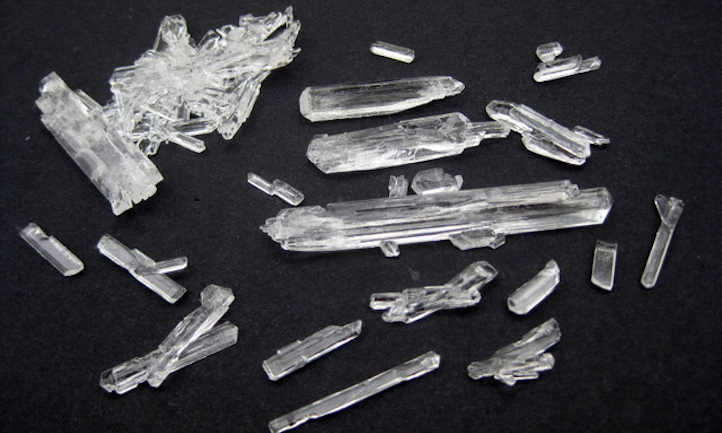
Finally, there are two interlinked claims that suggest that epsom salt does not linger in the soil, and that it is harmless for plants.
Unfortunately, these are even erroneous. While it is very water-soluble, any large quantities of undiluted epsom salt will linger in the soil. Recommendations for sprinkling as much of a cup of epsom salts into the garden exist, and that may cause some serious damage to your plants. Epsom salts have been linked to certain forms of root diseases as well as fruit flavor. Even one tablespoon of epsom salts per gallon of water as a spray has risks; it can cause leaf scorch, especially if used in hot weather.
Further, dissolved epsom salts can become a pollutant of groundwater. This can pose risks to the ecosystem, not just your own garden. There is evidence of rising magnesium levels in areas where this practice has been regularly done, and that’s on top of other pollutants such as excess NPK fertilizers. Too much of a good thing is a bad thing, particularly when it relates to your soil.
Weed Killer
There is literally no science whatsoever to suggest that epsom salt on its own is a weed killer. Yes, it can cause damage to plants, but only in large doses in the soil or with foliar application.
The only recipe I’ve been able to find for this practice recommends mixing 1 cup of epsom salt with two gallons of vinegar and then spraying that concoction onto weeds.
While normal household vinegar does have some effect against weeds, it’s limited at best. Agricultural vinegars used to combat weeds are usually 15-20% acid, where household vinegar is usually between 3-5% acid. Agricultural vinegar is such a strong acid, in fact, that it can burn your skin. If it can burn you, it’s quite likely it will be effective against weeds.
In contrast, household vinegar is so mild that you can put your whole hand into a bowl of it with no damage. Perhaps if you soaked your hand with it for a while you might have some mild irritation, but it’s safe enough that we eat it, so it’s not likely to be very effective against persistent weeds. Boiling water may actually be more effective and less acidic in your soil afterward.
Needless to say, epsom salts as weed killers really aren’t that useful. Even the vinegar treatment itself is pretty questionable.
So Is It A Good Idea?
Unfortunately, the only viable use for magnesium sulfate in gardening use is if your property is on farmland that’s been worked to death, and only if you’ve had a soil test done to see if your soil is deficient in magnesium. It doesn’t help promote good plant growth in peppers or tomatoes, it doesn’t make bigger flowers on your roses, and it doesn’t help other plants grow.
The appeal of using garden epsom is that it’s cheap. You can buy a huge box of it at the local pharmacy. But how often do you buy your gardening supplies from a pharmacy?
We recommend that you pick up a good-quality organic fertilizer or some good quality compost to supply the vital nutrients your plants need. Skip sprinkling Epsom salts around the base of plants, don’t apply it to your trees or in the planting hole for your newest seedling, and don’t mix it into a gallon of water to spray onto your plants.
There are still many gardeners who will swear it works for them, but if it isn’t able to be replicated in your garden and there are known risks when you use Epsom salts, there’s just no reason to take the risks. Once, it may have been a recommended method, but after a century of study, it’s been proven to be unnecessary for the garden.

